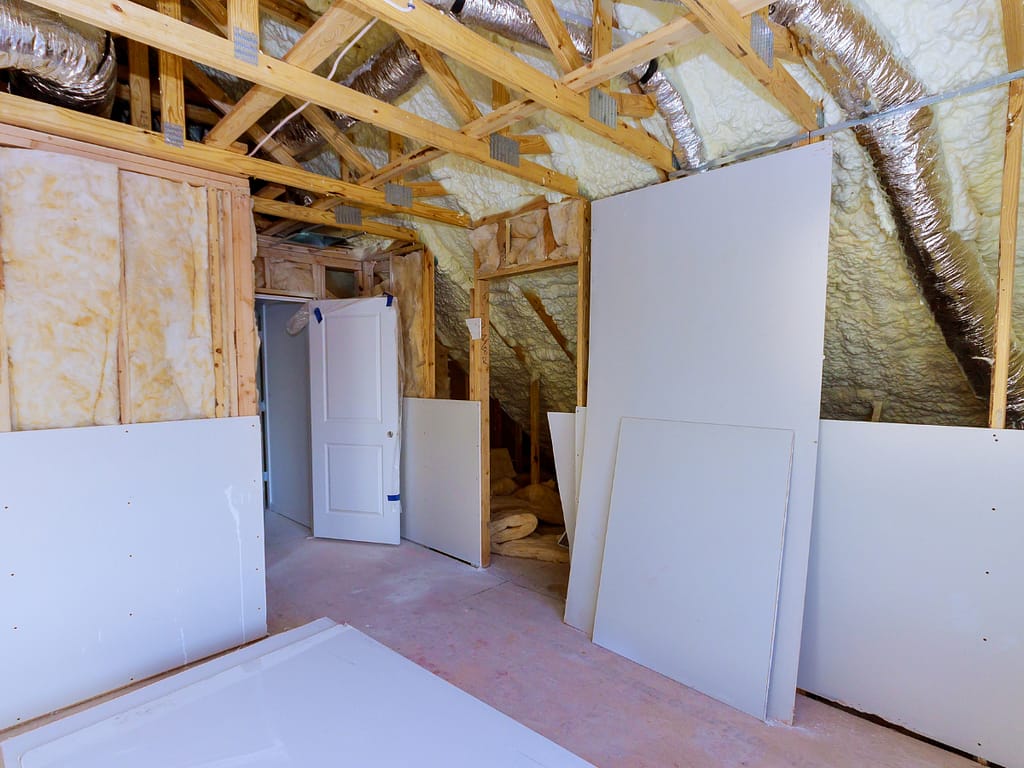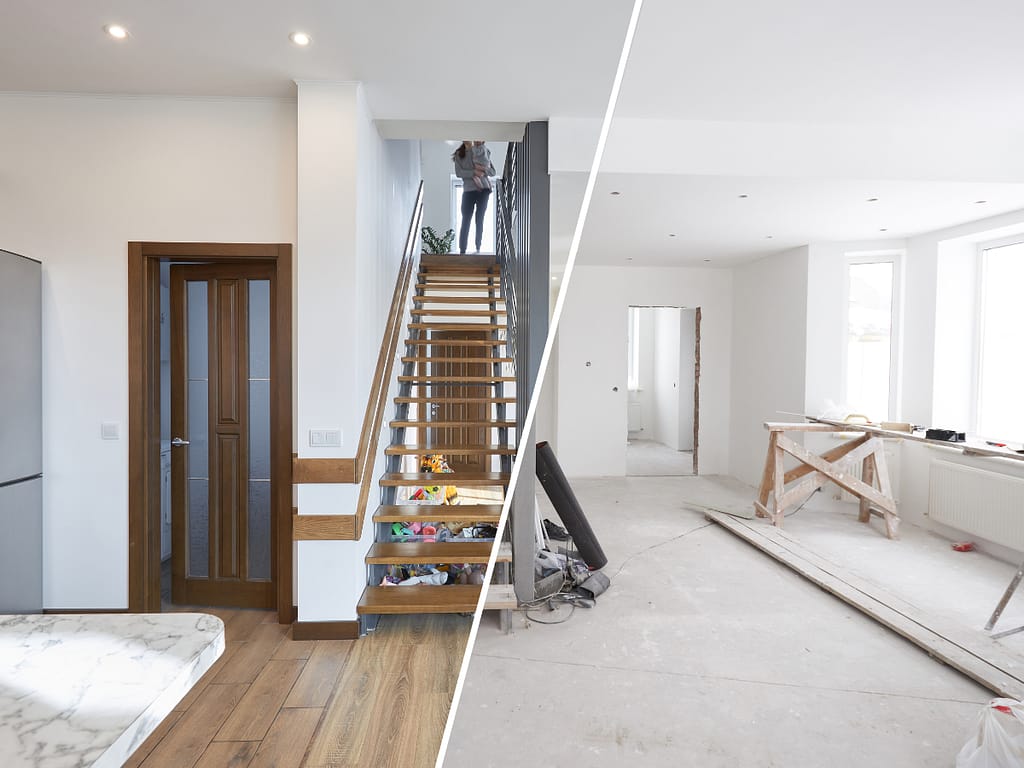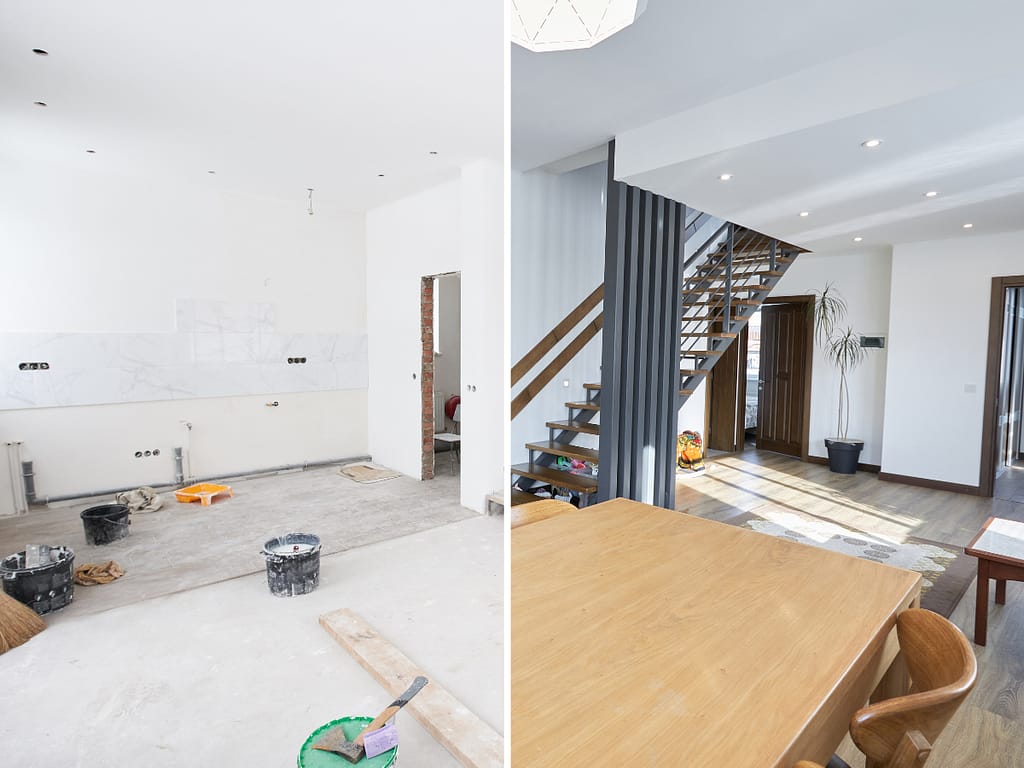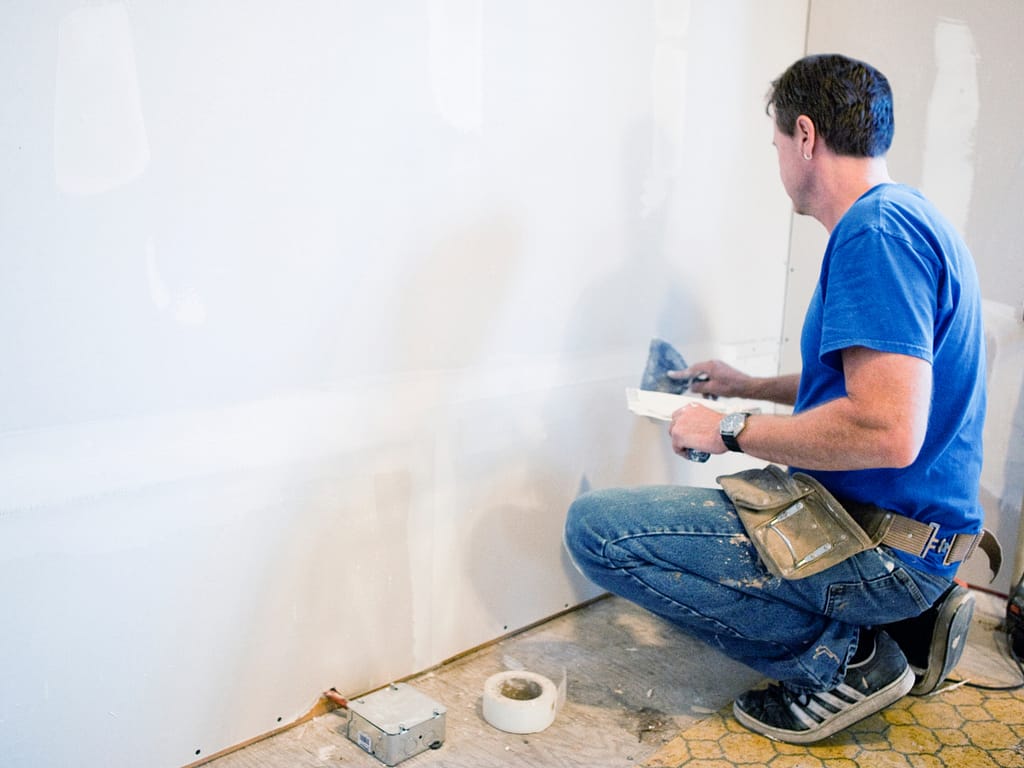Last Updated on October 16, 2024 by SampleBoard
Let's start from the basics: What are plasterboards?
Plasterboards, more commonly drywalls, are the modern alternative to plaster, made from minerals and water applied in layers with drying time in between.
Drywall emerged as a budget-friendly option that eliminated the wait for plaster dry time.
The flame resistance and quick installation features offered even more benefits to the choice.
Insulated plasterboards are made from a combination of traditional drywall and insulation.
Often referred to as insulated drywall, this building material integrates insulation with plasterboard panels and combines the structural integrity of drywall with insulation's thermal and acoustic benefits.
This offers a practical and efficient solution for improving your home's energy efficiency and acoustic comfort.

Generally speaking, there are two types of insulated plasterboards based on insulation material:
It may also be differentiated based on other factors, such as:
Check out insulation wholesale suppliers to get the best value for your money.
Check out the factors affecting the type of plasterboard you need, such as location, material availability, and stability.

Insulated plasterboards offer numerous advantages, among which are:
By installing insulation, you can drastically reduce heat gain in summer and heat loss in winter, which translates into lower energy costs and a smaller carbon footprint.
Unlike traditional insulation, which can have variations in R-value (a measure of thermal resistance), insulated plasterboard provides consistent insulation throughout the panel.
Unlike traditional drywall and insulation, which must be done separately, insulated plasterboard can be installed more quickly, saving time and labor costs.
Insulated plasterboards can reduce the noise that travels between rooms, contributing to a calmer and quieter living space.
This is especially helpful for people looking to improve their home theatre's acoustics or residences in noisy neighborhoods.
Foam-backed plasterboard is free of Formaldehyde, HCFC, and CFC.
So, it has little environmental impact and is much safer for the home's occupants.
A homeowner has multiple options when using insulated plasterboard.
A wide range of sizes, colors, and thickness options are available, as well as the option of thickening or maintaining the thinness of your wall.

Considering these types and benefits, you might still wonder whether an insulated plasterboard would suit your needs and circumstances.
For that, we take into account factors such as:

Installing an insulated plasterboard involves several steps.
If you decide to do it yourself, here are some general guidelines to help you evaluate if it's within your skill set.
Remember to check and follow the manufacturer's specific instructions and wear protective gear.
Begin by preparing the wall, ensuring it's clean and dry.
Apply adhesive to the back of the plasterboard in a grid pattern or dollops (following manufacturer guidelines).
Carefully lift and position the board, pressing firmly for good adhesion.
For added security, use mechanical fixings like screws and plugs.
Once in place, treat the joints with joint compound and tape, followed by a skim coat over the entire wall. Sand the final coat for a smooth finish.

Plasterboard with insulation is a great way to improve your house's acoustic performance, energy efficiency, and comfort.
You can profit from this cutting-edge building material if you properly analyze your unique needs and adhere to installation guidelines.

Given that it combines the functions of the plaster aesthetic and insulation material, you get the associated benefits from one material, eliminating the need for separate plaster and insulation installations.
Leaving an air gap is unnecessary for traditional insulation materials such as fiberglass or mineral wool.
These materials are designed to directly contact the plasterboard and transfer heat through the ceiling or wall.
Insulated plasterboard is a revolutionary technique for overboard ceilings as it minimizes labor costs, reduces renovation time, and improves thermal insulation.